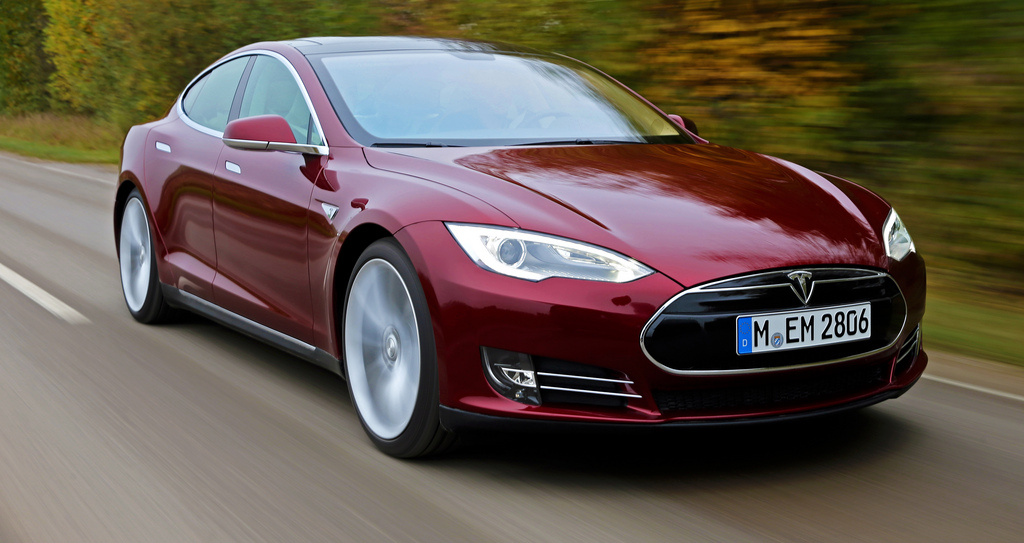This is a tale of two electric-car companies.
One, Better Place, declared bankruptcy back in May, and doesn't appear to be getting back on its feet anytime soon. Last week, the supposed buyer of the Israeli electric-car service was in bankruptcy court after failing to make scheduled payments.
Our writer Brian of London has written extensively about being a Better Place driver, and now he's written the company's obituary.
The other company, Tesla Motors [NSDQ:TSLA], is attempting to take plug-in cars mainstream--like Better Place. And it's doing pretty well.
The all-electric Tesla Model S luxury sport sedan has been showered with awards, and the company has become a darling of Wall Street.
Tesla is working to build a network of Supercharger quick-charging stations, and plans to open some battery-swapping stations as well.
How is Tesla succeeding where Better Place failed?
Putting the car before the charger
Better Place founder Shai Agassi knew that he needed a clever solution to overcome the two main issues plaguing electric cars: range anxiety and long charging times.
However, Better Place's model may have been a bit too clever. The company essentially sold customers access to a charging network first, with the car coming second.
![Renault Fluence ZE charging at Better Place charge point in apartment bldg [photo: Brian of London] Renault Fluence ZE charging at Better Place charge point in apartment bldg [photo: Brian of London]](https://images.hgmsites.net/lrg/better-place-photo-brian-of-london_100393065_l.jpg)
Renault Fluence ZE charging at Better Place charge point in apartment bldg [photo: Brian of London]
Signing up with the company was like buying cell-phone service: Buyers got a device (the car) and access to a network (of charging and battery-swapping stations).
A certain number of prepaid miles were bundled into the monthly payments for the car, as was the cost of the electricity it used.
Like a mobile-phone carrier, Better Place also left the development of its physical product to another company. Its Renault Fluence ZE electric cars were designed by the French car maker and built in Turkey.
With Tesla, it's the other way around.
Tesla started out with a product--an electric car, the Roadster, and now its second car, the higher-volume Model S. Only now is it gradually building a network of public charging stations (and, soon, battery-swapping stations) to support it.
"Instead of deciding on 'what environmentalists will be willing to give up to drive electric,'" Agassi said in a LinkedIn post about the company, "Tesla decided to build a car that supersedes all buyer’s expectations."
Object of desire
Agassi said an electric car should be an "object of desire"--and that's exactly what the Model S has become.
While the Better Place model was a perfectly practical solution for electric-car early adopters, Tesla has put itself in a position to appeal both to that group and to the larger group of people who just want a very nice car.

Tesla Model S
The Tesla Model S has many features--its 17-inch touch screen, impressive crash safety test scores, the P85 model's 4.2-second 0-to-60-mph time--that appeal to a wide variety of buyers, whether they're interested in emissions or not.
In fact, many Tesla fans don't care much about green causes, it appears.
The Model S also happens to be well-built. That's something few analysts would have been able to predict, given the general track record of startup car companies.
Though a Model S costs significantly more in the United States than the Better Place Fluence ZE plus mileage plan did in Israel, its desirability as a car means that Tesla can draw on a much larger pool of potential customers.
Being a completely new car from an upstart company, the Model S has also captured public's imagination (and the media's) in a way that the undeniably practical--but less flashy--Better Place model didn't.
What about charging?Out of the gate, Better Place emphasized its charging network, while Tesla focused on its car. Now Tesla is building a network of its own.
However, the launch of Tesla's Supercharger stations was been relatively gradual.
The first station went online in October 2012--months after the first Model S was delivered--and there are still only a few dozen open according to the map on Tesla's website.
Better Place had most of its planned battery-swapping stations open at launch; Tesla has only demonstrated battery swapping so far.
Again, the difference is that Tesla views charging as supplementary to its primary business of building cars.

Tesla Supercharger fast-charging system for electric cars
Customer choice
When he showed off 90-second battery swapping for the Model S, Tesla CEO Elon Musk said the company was giving customers a choice between "fast" battery swapping and "free" Supercharging. The network is an added perk for customers, not a significant source of revenue.
Battery swapping will also allow Tesla to earn more California zero-emission vehicle credits.
This strategy makes Tesla more like Nissan, which is trying to facilitate use of its plug-in Leaf by financing the installation of quick-charging stations nationwide.
Cash from car makers may simply prove to be a more sustainable business model for public electric-car charging, an area where profits seem elusive. Electric-car charging network Ecotality joined Better Place in bankruptcy last month.
Too much, too soon?
Taken together, Tesla's success and Better Place's failure offer a possible business lesson: While many people are willing to give electric cars a try, they may not be willing to accept an entirely new ownership experience.
Buyers seem to want to lease or buy a vehicle at the point of sale--and deal with charging separately. That follows the model of the internal-combustion car; no buyer pays for fuel up front.
Perhaps there's only so much newness people are willing to accept with electric motoring, at least for now.
Or as old industry hands say, "It's all about the car."
If the automobile isn't compelling, the rest may not matter.
_______________________________________________












